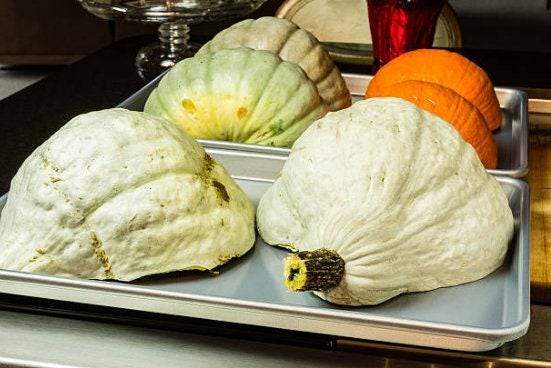The story is told that Elizabeth Hubbard, a washerwoman for the Gregory family in Marblehead, MA, gave her employer the seed for an heirloom squash. J. H. Gregory immediately named the squash "Hubbard," saying that Mrs. Hubbard was "a good, humble soul, and it pleases me to think that the name of such a one had become, without any intent of hers, famous." This Blue Hubbard type in particular was introduced in 1909 by the Gregory Seed Company.
A delight to the eyes and the palate, Hubbard's bountiful flesh with rich flavor is perfect for baking, roasting, soups, and pies. This variety has blue/gray skin and fine textured orange flesh that can weigh from 7 - 40 lbs. Matures in approximately 110 days. It may be used as a substitute for pumpkin in many recipes. The fruits sweeten as they cure, and store for up to six months. Vigorous 10'-20' vines. Cucurbita maxima. 10+ Organic seeds.
~ planting ~
Since squash seedlings do not tolerate frost, provide protective coverings if cold weather threatens. Keep the soil moist at all times, but avoid getting the leaves wet as this can cause diseases such as rot or mildew. When the vines begin to develop, a layer of mulch will help conserve moisture and control weeds; mulch also will keep the squashes clean and protect them from too much soil contact. By midsummer, pinch off all the blooms to concentrate the plant's energy on the developing squashes.
~ harvesting ~
Squashes can be harvested as soon as the stem begins to dry and the skin becomes too hard to pierce with a fingernail. Because cold weather can damage squashes, they should be harvested before the first frost. Cut the stem with a sharp knife, leaving a 2-3" length." Do not carry the squash by the stem; if the stem breaks off, use it as soon as possible, since this causes the squash to deteriorate quickly. Cure the squashes in the sun or a dry location until the stem shrivels; do not wash the ones you intend to store.



















